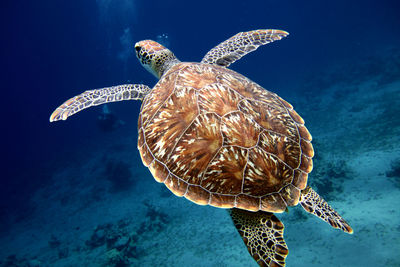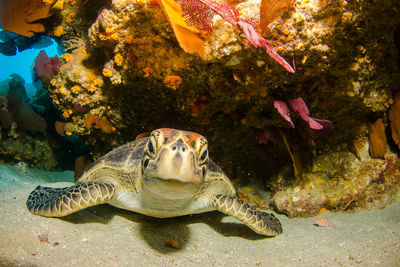From the patter of tiny turtle flippers as they race to the sea; to spotting an adult casually cruising through the blue; or finally seeing the determined digging of a mother laying her eggs, sea turtles are some of the most enchanting and fascinating creatures to inhabit the world's oceans. While every day is turtle day to us, today we get to officially celebrate these relaxed reptiles and to mark the occasion we've shared our top hot-spots, anecdotes and pub quiz-worthy facts (teaser: they're some of the ocean's oldest creatures - dating back 100 million years!).

Species Specialties
Although you may already know that there are seven species of sea turtle - leatherback, green sea, loggerhead, hawksbill, Kemp's ridley, olive ridley and flatback sea turtle - did you know which of these holds the title of heaviest? A fully-grown leatherback turtle can grow between 550 - 1,500 pounds, however the heaviest ever recorded tipped the scales at 1,980 pounds - pretty impressive considering that they also travel some 10,000 miles a year. Not to be outdone on superlatives, a green turtle can hold its breath underwater for the longest at an impressive five hours.

The Circle of Life
From the moment they leave the beach as hatchlings, turtles will not touch land again until females return to the very same beach to hatch their own young, which, depending on the species ranges between ten to 50 years later. Males never return to land.

A Raja Special Encounter
'While on a charter trip in Raja Ampat, the crew treated us to a surprise barbecue on a secluded beach by candlelight. Half way through our feast, a weary green turtle heaved her way up the beach to dig a hole and deposit her eggs under the stars. This would be the exact same beach she had struggled to the water from as a hatchling herself, some 20 years ago, and the first time she'd made landfall since!' - India Tyndall, Original Diving Specialist

Survival of The Fittest
While a female will lay up to 150 eggs every two to three years, very few will make it to adulthood. Whether running the gauntlet from nest to water or facing the predators of the open ocean, only around one hatchling in every thousand survives.

A Human Threat
From being caught as bycatch (particularly in longline and purse seine fishing) to habitat loss to consumption of their eggs and meat, six out of the seven species of turtle are now classified as endangered, which, when you consider the millions of years they have inhabited the earth, is pretty terrifying. To help preserve these magnificent creatures, know where your purchases come from - be it ensuring your seafood is caught sustainably; avoiding wildlife products (we're looking at you tortoise shell jewellery); or volunteering for a marine conservation charity (we can help you with organising that) - so that they can live for another 100 million years.
We can help you see the full circle of life of these relaxed reptiles so get in touch to organise your turtle-y awesome adventure (sorry).












